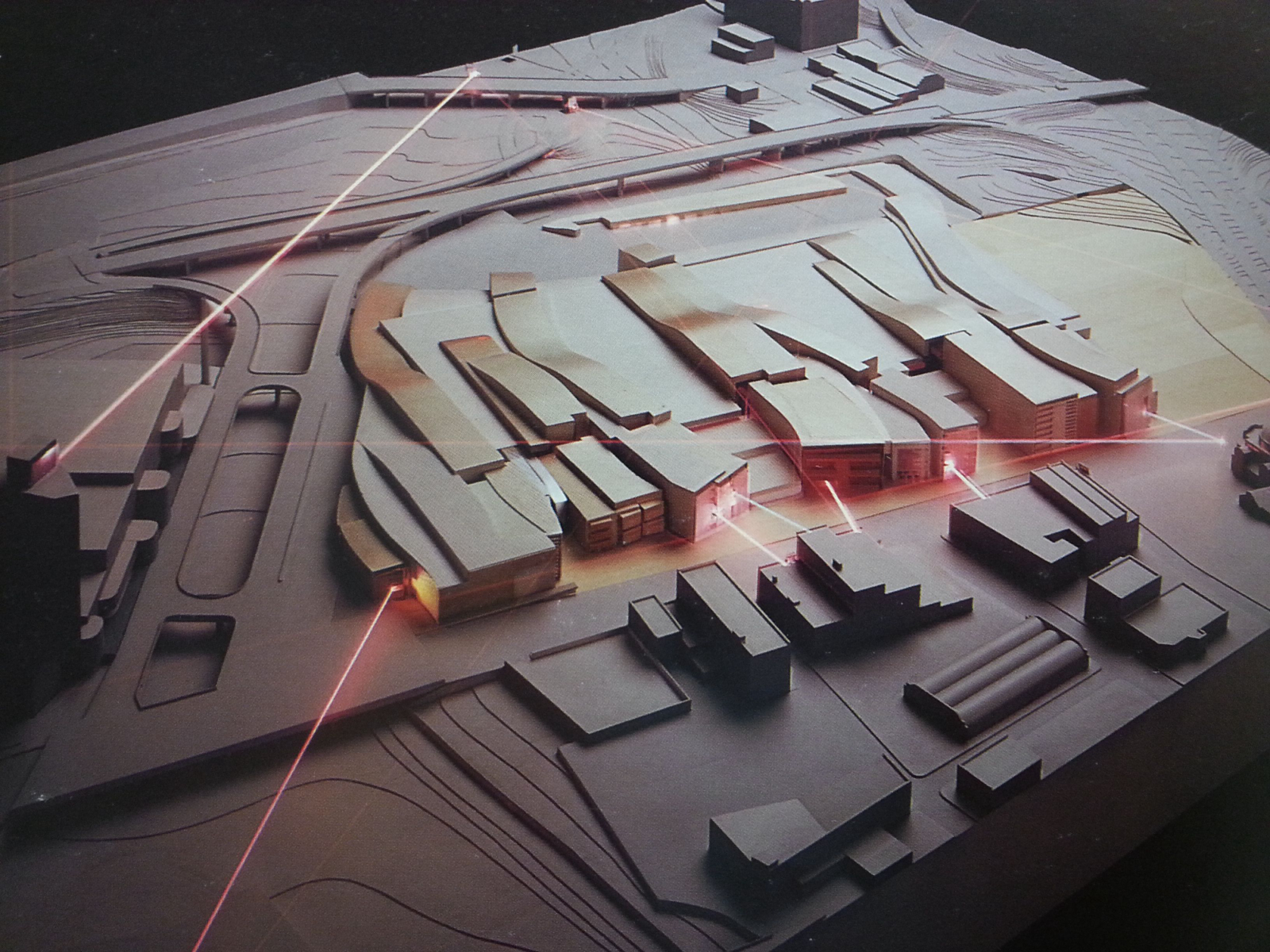But from an architect known for difficult, disorienting buildings whose very philosophy was to defy function, the GCCC actually works—it is abstract without being opaque, challenging without being actively hostile.
No upside down stairs here or windows in the floor, no hallways to nowhere or vertigo effects--though the pitched planes of the ballroom even gave Eisenman the illusion the room was moving
In fact, for all of its outward attempts to jostle the eye, the inside of the convention center is a clear and straightforward, organized around a skylit atrium paralleling the building's long sides.
On one side are 54 meeting rooms and the ballroom; on the other, the exhibition hall, but the main space inside is a corridor that cuts perpendicularly through the building so that colors and ceiling heights change as you walk through it.
Up top, the curving strips of the roof screech to a halt at the building’s western end on High Street, on the downtown edge of the city, two miles south of Eisenman’s Wexner Center, completed a few years prior.
The GCCC’s three-block-long facade is broken up into 11 segments, clad alternately in masonry and glass and generally matching the proportions of the 19th century brick industrial buildings across the street.
Eisenman’s side is a jauntier, more colorful Who Framed Roger Rabbit? version of a city street, from one long view a rumpled mass, as though shaken by an earthquake--crooked, sliding forward, backward, playful, slightly aggressive.
Those bizarre colors.
A number of these High Street facades also recall sawed off ends of fiber optic cables, blown up to an absurd scale—a scale that nevertheless neatly matches its neighbors over the road.
Contrast this with convention centers built at the time and those built in the decades before, which made little to no attempt to integrate into their surroundings.
Pei Cobb Freed’s Javits Center, opened 10 years earlier, remains an isolated, lumpen pile of bottle green glass on the western edge of Manhattan—as AIA members (re) discovered at the convention this June.
The building’s roof—Eiseman’s “fifth façade”—is best appreciated from a plane or Google Maps--where its reads like some giant Claes Oldenburg microchip, but bigger and far more disquieting.
The late New York Times architecture Herbert Muschamp hailed it as exuberant, robust, visually generous, even jolly.
Chicago Tribune architecture critic Blair Kamin remarked it made Jahn’s Thompson Center seem tame by comparison—“What in the name of Newton is going on here?” he asked.
The deconstructivist acrobatics of Eisenman’s buildings still provoke and challenge (or anger and unsettle, depending on your point of view), but GCCC is unique in its contextual approach to the physical fabric of the city and the rapidly accelerating electronic information landscape.




